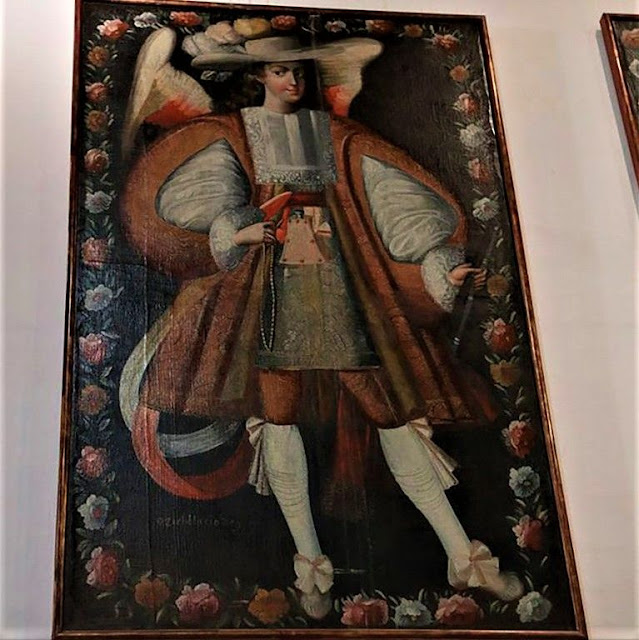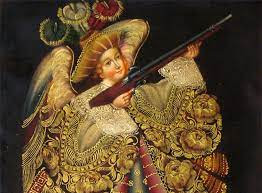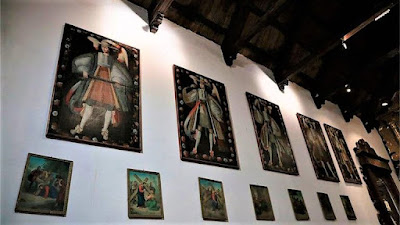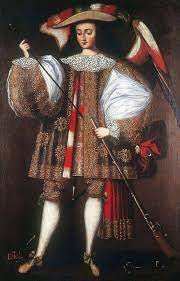ÁNGELES ARCABUCEROS - PINTURA CUZQUEÑA
ANGELES ARCABUCEROS - PINTURAS CUZQUEÑAS:
En América Colonial, la pintura desde los primeros tiempos, más que el goce estético, tuvo como objetivo la intención didáctica. Era importante trasmitir al nativo el nuevo culto.
El convertirlo a la nueva religión, generó gran demanda en la construcción de iglesias de todas magnitudes, templos y catedrales. Con ello también gran necesidad de esculturas y pinturas que mostraran simbología específica.
Algunas provenían de Europa, pero resultaba muy caro el proceso, por lo que se desarrollan centros artísticos. Los más importantes surgieron en la zona del lago Titicaca, específicamente en el Cuzco y Potosí, que llamamos “Pintura Cuzqueña”.
Para entender y valorar la pintura, que es nuestro análisis, diremos que está influenciada por tres corrientes europeas:
- La italiana que llegó de la mano del jesuita Bernardo Bitti.
- La influencia Flamenca, mediante los grabados que traían los libros religiosos, editados en Amberes (Durero, Rubens).
- La española que se manifestó mediante la influencia de Murillo y Zurbarán.
A estas tres corrientes debe agregarse el espíritu interpretativo de los nativos, su impronta… Los maestros Quispe Tito en el Cuzco y Pérez Olguín en Potosí, le pusieron identidad y carácter a esta nueva pintura.
Mucho podríamos hablar de todo esto, por ejemplo la manufactura de este arte; pero hoy pondremos atención a los “Ángeles Arcabuceros”.
En general de aspecto tenebroso por el uso del esfumado, los colores tierras y las veladuras, más la aparición del dorado sobrecargado, es el llamado de atención compositiva de la nueva obra. Imágenes ingenuas y cuadros sin firmar… dos grandes características que se suman a esta Pintura Cuzqueña. Sin firmar, porque llega a América las influencias y el miedo de la Inquisición española. De hecho en algunos casos se firmaba con iconos e imágenes como la paloma, la rama de olivo, etc.
Se llaman Ángeles Arcabuceros a los combatientes Celestiales del mal, era una creencia popular muy fuerte. Seguramente por eso se los presenta vestidos de militares españoles del siglo XVII, muy broquelados en dorados, con arcabuces, banderas, tambores en sus manos.
En Argentina existen solo tres colecciones, en la provincia de Jujuy: ocho ejemplares en Cazabindo y nueve en Uquía.
Tere Lorenzoni (Prof Nacional de Pintura. Lic en Diseño, Artista plástica.)
Arquebusier Angels:
In Colonial America, painting from the earliest times, more than aesthetic enjoyment, had as its objective the didactic intention. It was important to transmit the new cult to the native. Converting it to the new religion, generated great demand in the construction of churches of all sizes, temples and cathedrals. With this, there is also a great need for sculptures and paintings that show specific symbols.Some came from Europe, but the process was very expensive, so artistic centers were developed. The most important arose in the area of Lake Titicaca, specifically in Cuzco and Potosí, which we call “Cuzqueña Painting”. To understand and value painting, which is our analysis, we will say that it is influenced by three European currents:
- The Italian that came from the hand of the Jesuit Bernardo Bitti.
- The Flemish influence, through the engravings brought by the religious books, published in Antwerp (Dürer, Rubens).4
- The Spanish that manifested itself through the influence of Murillo and Zurbarán.
We could talk a lot about all this, for example the manufacture of this art; but today we will pay attention to the “Angels Arquebusiers”. In general, with a dark aspect due to the use of fading, earth colors and glazes, plus the appearance of overloaded gold, it is the compositional call of attention of the new work. Naive images and unsigned paintings ... two great characteristics that add to this Cuzco Painting. Not signed, because the influences and fear of the Spanish Inquisition reach America. In fact, in some cases it was signed with icons and images such as the dove, the olive branch, etc.
Arquebusiers Angels are called the Celestial combatants of evil, it was a very strong popular belief. This is probably why they are presented dressed as seventeenth-century Spanish military men, heavily embellished in gold, with arquebuses, flags, and drums in their hands. In Argentina there are only three collections, in the province of Jujuy: eight specimens in Cazabindo and nine in Uquía.
Tere lorenzoni (National Prof of Painting, Lic in Design, Plastic artist)







Gracias Tere por tu enseñanza.
ResponderEliminar